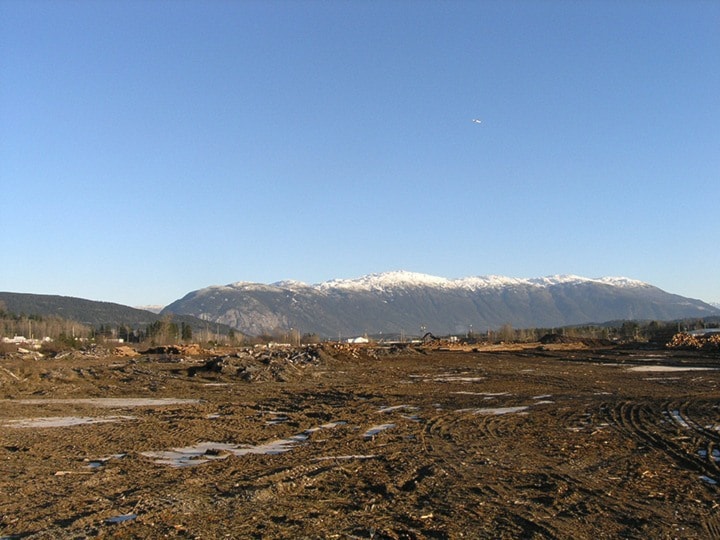A planned wood pellet plant here is a crucial part of the equation needed for the development of a value-added forest industry, says one of its proponents.
The plant, the planning for which is the subject of an agreement struck last week by forest tenure holder Coast Tsimshian Resources and pellet producer Pinnacle Renewable Energy, would use fibre now considered waste, says Coast Tsimshian chief executive officer Wayne Drury.
“As you know, using that part of the [forest] profile has always been a challenge,” said Drury.
That's because the percentage of fibre in the area which can't be used in a sawmill to manufacture lumber tends to be higher than elsewhere, creating mountains of residue which then need to be dealt with.
“We've always said we've been looking for a way to use that waste. We really need to add value and that's been our objective,” said Drury in explaining the reasoning behind the agreement with Pinnacle, which has six pellet plants in BC, including ones in Houston and Burns Lake.
He described the agreement between Coast Tsimshian and Pinnacle as a good fit because one can supply the fibre and the other the manufacturing expertise and both have extensive business experience in the region.
Wood pellets are formed from waste wood by applying pressure which also results in moisture being squeezed out.
They are burned in furnaces and stoves in residences and commercial buildings.
Drury said Terrace is a logical place for a wood pellet plant because of the availability of fibre, because it would complement Pinnacle's other plants along Hwy16 and because of the closeness to an export facility Pinnacle has opened in Prince Rupert.
For now, the favoured location for the plant is the far western end of Coast Tsimshian's Keith Ave. Poirier log yard where it is bounded by Frank St.
CN's rail line and Hwy16 run along the northern end of the property, providing easy access either by road or by rail to Pinnacle's Prince Rupert export terminal.
“That's where we'd like it to be but the final decision will depend upon an evaluation of it and other locations,” said Drury.
The size of the plant, how much fibre it can take in and how much it will produce and its cost has yet to be decided.
Drury said Coast Tsimshian and Pinnacle will be looking for additional fibre from other forest companies in the area and that the resulting volume will help establish the plant's output.
One potential customer already being talked about is Skeena Sawmills, located right across the highway from the Poirier log yard.
“What our goal is is to establish something that will benefit the entire area,” said Drury.
He did add that the ultimate goal of Coast Tsimshian is to open a sawmill, fleshing out the equation needed to earn revenue from the forest resource and so that it can ship finished products to China instead of raw logs.
Formed in the early part of the last decade Coast Tsimshian Resources is owned by the Lax Kw'alaams band of Port Simpson.
It gained prominence by buying the majority of the forest tenure once held by Skeena Cellulose, which had been the region's dominant forest industry player until it went out of business in the late 1990s.
Coast Tsimshian was also one of the first aboriginal-owned forest companies to market logs in China.
This isn't the first time Coast Tsimshian has looked for a partner to further its value added aims.
In September 2010 it announced a partnership with a Vancouver company called Global Bio-Coal to build a $30 million plant using microwave technology to turn fibre into coal at the Poirier log yard.
That partnership ended in late 2011 and Coast Tsimshian has been looking for other opportunities since then.
Other companies have also looked at setting up various forms of bio-fuel manufacturing facilities in the Terrace area over the years. That list included Vattenfall, a Swedish energy giant.
